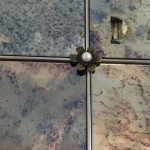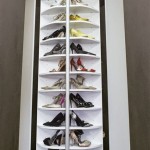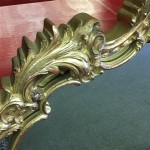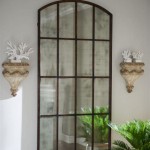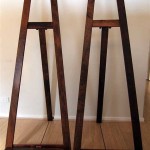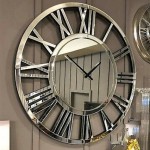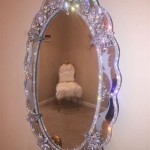How To Hide a TV Behind a Mirror
Concealing a television behind a mirror offers a sleek, modern solution for integrating technology seamlessly into a living space. This approach allows homeowners to enjoy their favorite shows without the TV dominating the room's aesthetic when not in use. Several methods achieve this effect, each with varying levels of complexity and cost.
One popular option involves utilizing specialized mirrored TV glass. This type of glass is specifically designed to appear as a regular mirror when the television is off. The glass incorporates a dielectric coating that allows light to pass through when the TV is on, revealing the screen beneath. These mirrors are available in various sizes and can be custom-ordered to fit specific dimensions. Professional installation is typically recommended due to the delicate nature of the glass and the wiring involved.
Another readily available solution is the use of a two-way mirror. These mirrors, also known as partially reflective mirrors, reflect a portion of the light while allowing some light to pass through. When placed in front of a television, a two-way mirror effectively hides the screen when it's off. However, the TV's image quality might be slightly diminished when viewed through the mirror. Choosing a high-quality two-way mirror and ensuring proper lighting conditions can minimize this effect. This method often requires a frame or housing to secure both the mirror and the television.
A more DIY-friendly approach involves using mirror film. This film can be applied to a piece of acrylic or glass, effectively transforming it into a reflective surface. While this method is more budget-friendly, the resulting mirror effect might not be as polished as dedicated mirrored TV glass or a two-way mirror. Careful application is crucial to avoid air bubbles and wrinkles, which can detract from the overall appearance. The television can then be mounted behind the mirrored surface.
When planning a TV-behind-mirror setup, careful consideration should be given to the television's placement and the surrounding environment. The distance between the mirror and the television affects the clarity of the image when the TV is on. Too much space can result in a washed-out picture, while too little space can lead to heat buildup, potentially damaging the television or the mirror. Adequate ventilation is crucial to prevent overheating.
Lighting plays a significant role in the effectiveness of this concealment strategy. Ambient light in the room can impact the reflectivity of the mirror and the visibility of the television screen. In brightly lit rooms, the mirror effect might be more pronounced, making the television less noticeable when off. Conversely, in dimly lit rooms, the television screen might be more visible even when turned off. Strategic placement of lighting fixtures can help optimize the balance between concealment and viewing experience.
Choosing the right television is also essential. LED TVs are generally preferred for this application due to their slim profile and lower heat output. The television's brightness and contrast ratio should also be considered. A brighter screen will be more visible through the mirror, while a higher contrast ratio will enhance picture quality.
The installation process, regardless of the chosen method, requires careful planning and execution. Precise measurements are crucial to ensure a proper fit. Wiring should be concealed neatly to maintain a clean and uncluttered appearance. Depending on the complexity of the project, professional assistance might be necessary, particularly for installations involving mirrored TV glass or custom framing.
Beyond these common methods, advancements in technology continually offer new and innovative solutions. Motorized mechanisms that allow the mirror to slide or swivel to reveal the television are gaining popularity. These automated systems provide a seamless transition between concealed and viewing modes, adding a touch of sophistication to the setup. However, these systems typically involve a higher cost compared to more traditional approaches.
Several factors contribute to the overall cost of concealing a TV behind a mirror. The size of the mirror and the chosen method are primary determinants. Mirrored TV glass tends to be the most expensive option, followed by two-way mirrors and mirror film. Installation costs can also vary significantly depending on the complexity of the project and the need for professional assistance.
Maintenance of the mirror and the television is relatively straightforward. Regular cleaning of the mirror surface with a suitable glass cleaner will maintain its reflectivity. The television can be accessed and maintained as usual, though care should be taken to avoid damaging the mirror or its surrounding frame. Dust accumulation behind the mirror can be minimized by ensuring a well-sealed enclosure.

Tv Behind A Mirror Living Room In Bedroom

The Living Room Tv As We Know It Is Over Laurel Home

22 Modern Ideas To Hide Tvs Behind Hinged Or Sliding Doors Home Decor House Interior

29 Creative Modern Ways To Hide A Tv Digsdigs

Stimuli Sight Sound Llc Hide Tv Over Fireplace Decor

8 Smart Ways To Hide Your Tv Wma Property

Hide My Tv Home Of Solutions

17 Ways To Stylishly Hide A Tv In Plain Sight Domino

15 Ingenious Ways To Hide A Tv

Tv Behind Two Way Mirror High Def Forum Your Definition Community Resource Wall Mounted

